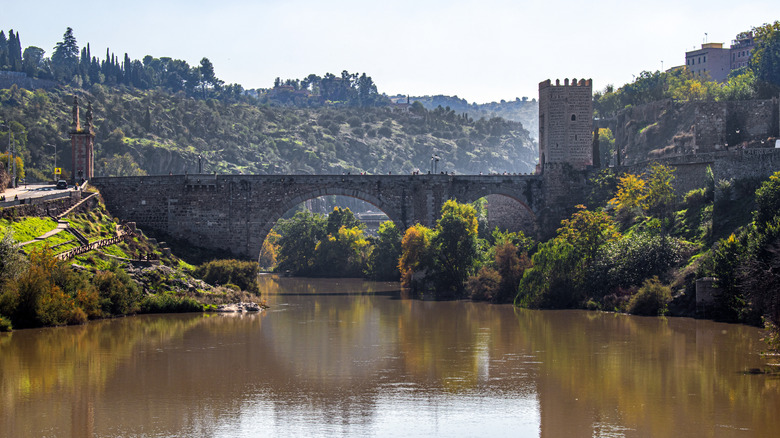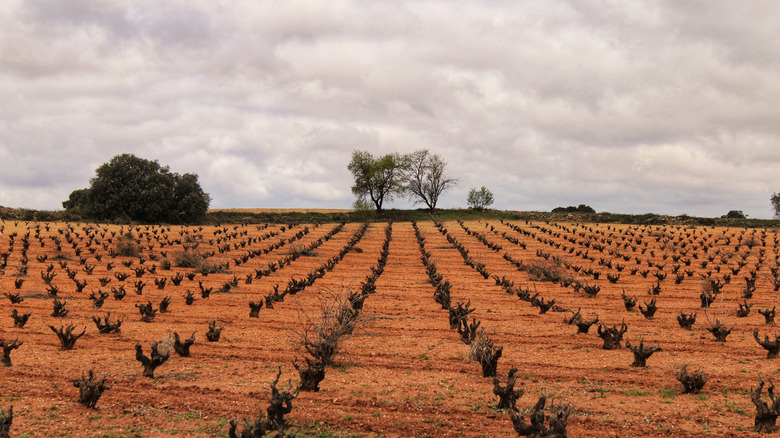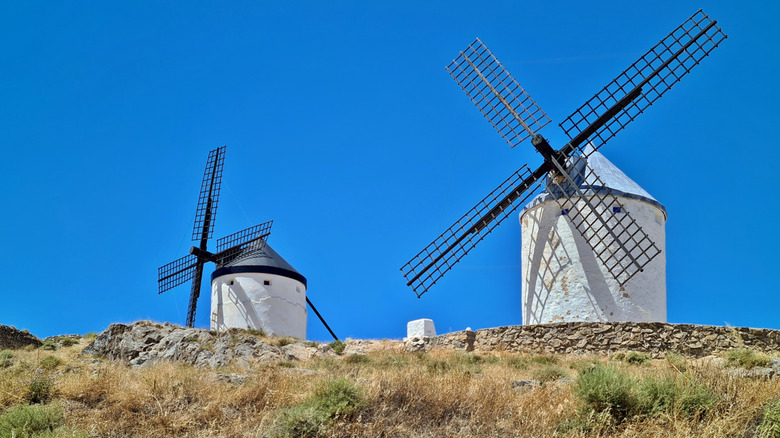This Unsung Spanish Destination Has More Acres Of Vineyards Than Any Other Wine Region In The World
Spain is no stranger to superlatives. This ever-popular corner of the continent boasts the world's largest number of Blue Flag beaches, after all. It's also been hailed as the absolute best for road trips in Europe — driving odyssey through the Moorish towns and whitewashed villages of Andalusia, anyone? On top of that, Spain happens to be a veritable mecca for wine. Just look at the stats: 961,000 acres of planted vines; the most of anywhere in the world. One region alone accounts for a huge proportion, mind you. Cue the alluring region of La Mancha.
Bordered by the lynx-stalked Sierra Morena mountain range in the south and the lavender-scented wilds of La Alcarria region in the north, La Mancha encompasses a huge cut-out of Central Spain. It was made famous by the great writer Miguel de Cervantes, author of "Don Quixote," who chose the region as the backdrop for his legendary tale of an errand knight and his squire. But you could say that Tempranillo and Cabernet Sauvignon are just as important these days, since La Mancha now reigns as the single continuous wine region on planet Earth.
Now, La Mancha may well be an arid, mountain-shrouded land peppered with national parks, but it's actually not all that difficult to get to. The historic city of Toledo is often touted as one of the highlights of the area, and you can get there in just over 30 minutes on the train from Madrid. Going further to Valdepeñas, regularly considered the beating heart of La Mancha's wine regions, will take just over two hours in the car from the capital's Adolfo Suárez Madrid–Barajas Airport.
Getting to know the wine of La Mancha
How is it that just this one corner of the country can come to be responsible for almost half of the total grapes grown in the whole of Spain? The answer is a combo of history and climate. Let's start with the history. The first vines were planted here by the Romans, and winemaking was still going in La Mancha after the Muslim conquest. It then boomed again in the 15th and 16th centuries following the Christian reconquest. The upshot? The region has seen over 2,000 years of viticulture.
La Mancha has a distinct climate, too. It can be subzero here in the depths of winter, but soar to over 115 degrees Fahrenheit come the peak summer. On top of that, there can be as little as 300 millimeters of rainfall each year, which is only a third more than what's recorded in the Gobi Desert. Throw in a whopping 3,000 hours of sunshine and some modern innovations in irrigation and bingo: You've got yourself one darn fine place to grow grapes.
The town of Valdepeñas is the perfect place to focus on if you want wine, wine, and more wine. It's located to the south of the main La Mancha DO, an area that counts 250 separate wineries. But while quantity is the name of the game in greater La Mancha, Valdepeñas is all about more nuanced and fruity reds.
Literary adventures in La Mancha
While there might be wine at every bend in every country road in La Mancha, it's almost impossible to forget that this is also the erstwhile stomping ground of a certain Don Quixote. Yep, the protagonist of Cervantes' great 17th-century novel is omnipresent in these parts — a 32-foot wood carving here, a whole museum dedicated to the fictional knight there. In fact, there's now an EU-recognized cultural route that links up all the major Quixote-related sites across a mega 1,550 miles of country.
There's perhaps no more famous stop on that route than the windmills at Consuegra. They're now something of a symbol of La Mancha as a whole, but were mistaken for giant men by Don Quixote, who proceeded to do battle with them. There are 12 in all, peppering a dusty ridge above the village beside a striking castle from the Moorish era.
Then there's Villanueva de los Infantes. Some believe it to be the mysterious original birthplace of the hero of the novel. There's the ubiquitous statue of Don Quixote on the square there, but also a symphony of glorious Renaissance architecture, beautiful Gothic churches, and shady arcades that date back centuries.


